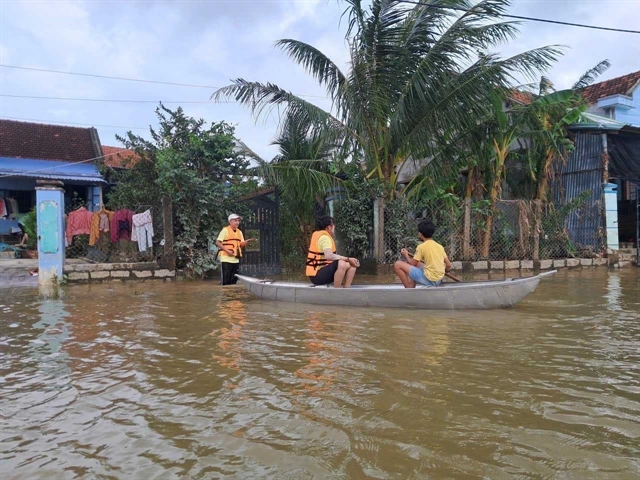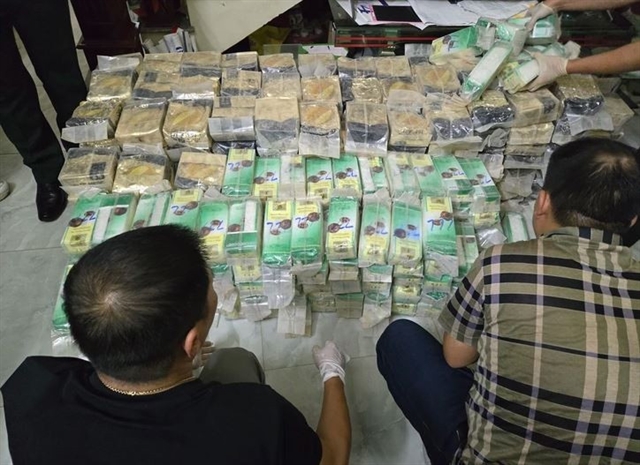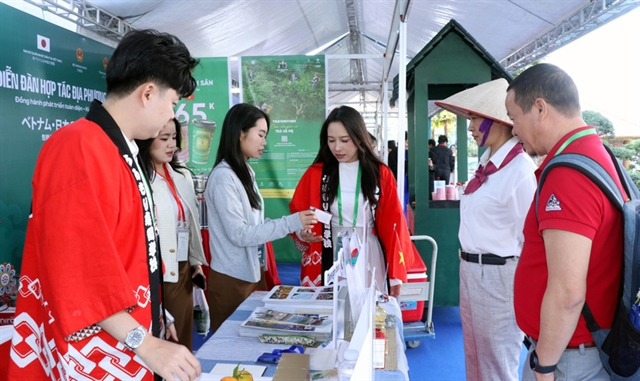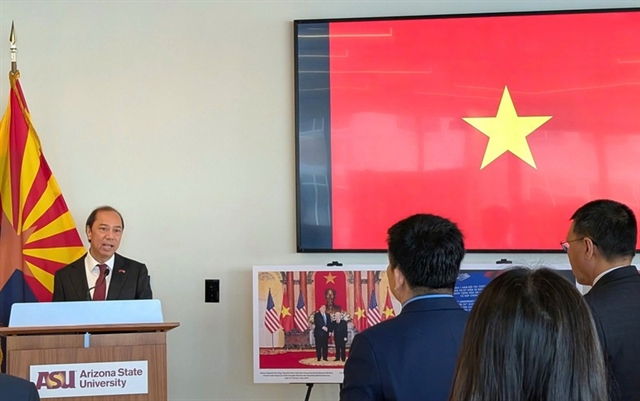 Society
Society


|
| The HCM City Disabilities Research and Capacity Development Centre is organising a contest titled Go with D.Map to expand the list of disabled-friendly public sites available on the app. — VNS Photo Gia Lộc |
HCM CITY— A disabled student never used the toilets in her schools during her 16 years of education because their doors were too narrow for a wheelchair to enter.
Dr Võ Thị Hoàng Yến, herself with a physical disability and founder and director of the NGO HCM City Disabilities Research and Capacity Development Centre (DRD), shared this unfortunate story recently at the launch of a contest to upload information about public sites people with disabilities can access on a mobile phone application, D.Map without revealing who she was or where it was.
“Staircases and narrow toilet doors are barriers for them.”
Yến, also vice chairwoman of the Việt Nam Federation for Disabilities, said the country ratified the Convention on the Rights of Persons with Disabilities in 2014, enacted the Law on People With Disabilities and created a national construction code to ensure people with disabilities can access public sites.
But many construction and transport works throughout the country, including in large cities like Hà Nội and HCM City, fail to meet the code, leading to difficulties in accessing them, she said.
A survey of public sites in HCM City’s districts 1,3 and 10 done in 2011- 12 found only 78 out of 1,800 could be accessed by people with disabilities.
Nguyễn Văn Cử, a person with a physical disability, said: “We need and want to know accessible sites with ramps for wheelchairs. Toilets should have handrails installed at lower positions for us to use.”
The DRD centre took the initiative to create a map with accessible sites for them in 2011-12.
The map was digitised through D.Map.
Nguyễn Minh Luân, an engineer with a physical disability, and his peers developed the application for iOS and Android.
Luân is among many disabled people benefiting from the assistance programmes of the DRD.
“We use a data base collected by a group of volunteers at the DRD Centre to create a printed map to help people with disabilities access public sites and integrate confidently into society,” he said.
“People with wheelchairs need to know where they want to go to have a way for their wheelchairs to enter or elevators to be wide enough for them.”
People with disabilities in Việt Nam can now know the locations of disabled-friendly community venues such as parks, coffee shops and public sites thanks to D.Map.
More than 1,400 public sites in Hà Nội, Đà Nẵng, HCM City, and provinces are now shown in the app.
The figure is expected to increase as more and more people are exhorted to download the app and comment about sites.
D.Map is developed with sponsorship from the United Nations Development Programme (UNDP) and the U.S. Agency for International Development and initial technical assistance from Hoa Sen University.
Yến said: "The app would help eliminate barriers so that disabled people could integrate socially and send the message that nobody in the community would be left behind."
It could also be useful for pregnant women, people with baby strollers and seniors, she added.
Nguyễn Tuấn Khởi, standing vice chairman of the Việt Nam Red Cross Society’s Sponsor Council, said the ratio of senior people in the country would increase in the next 20 years.
But only 1,400 public sites are listed in the app while the country has nearly seven million people with disabilities, the main reason why the DRD centre organised the contest, which is titled Go with D.Map.
According to the UNDP, nearly 15 per cent of the population in Việt Nam live with some form of disability, which translates into 13 million people.
They are some of the most vulnerable members of society, and facing significant challenges and barriers in daily life. VNS




